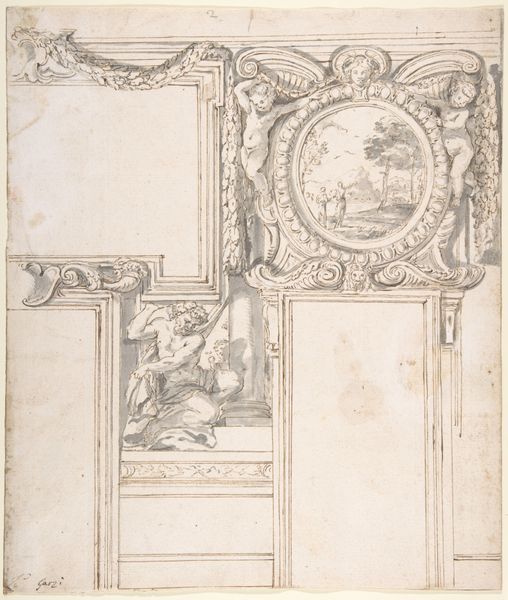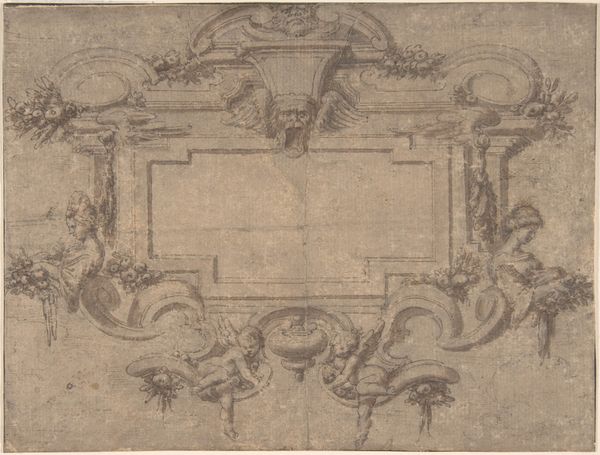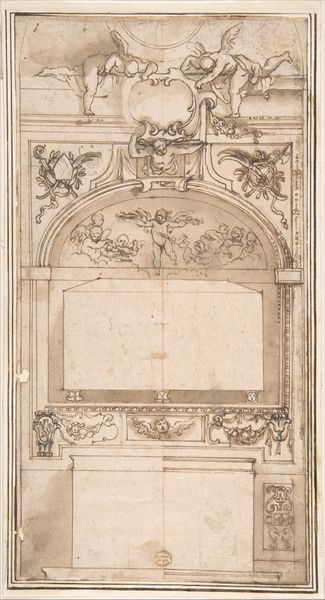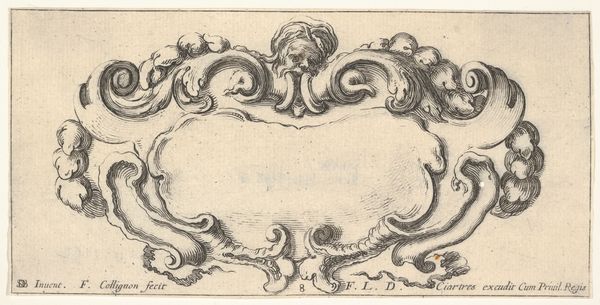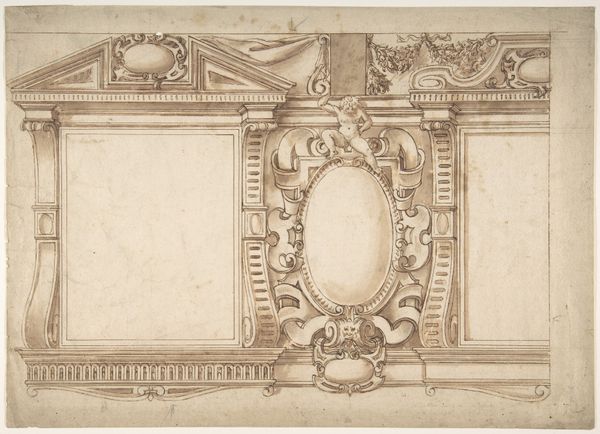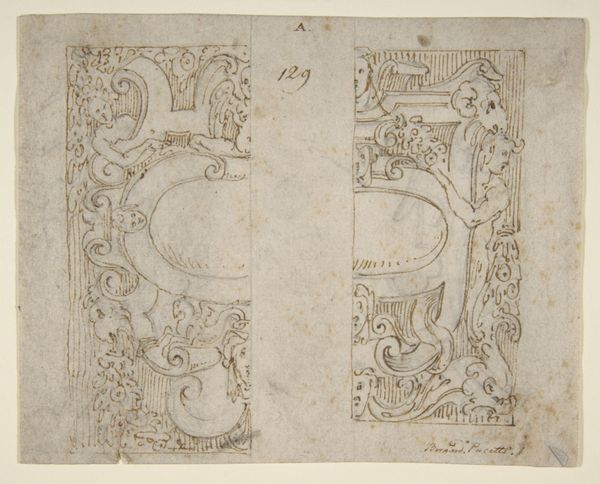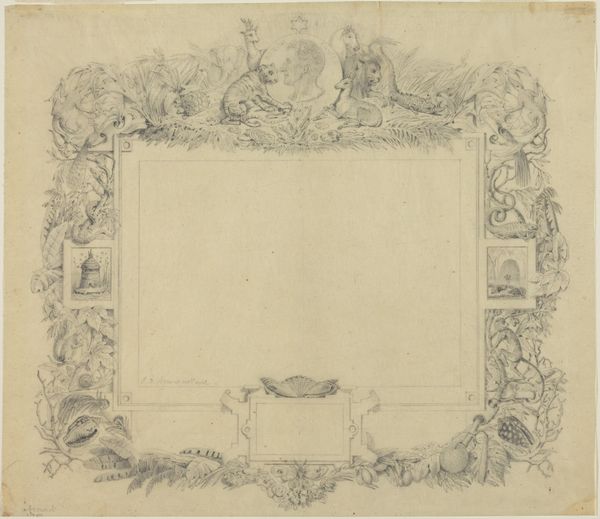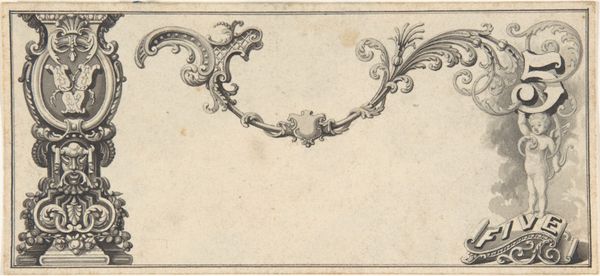
Design for a Carved or Openworked Frame with a Variant 1652 - 1725
0:00
0:00
drawing, print, pencil, pen
#
drawing
#
baroque
# print
#
pencil sketch
#
form
#
coloured pencil
#
pencil
#
line
#
pen work
#
pen
#
watercolour illustration
Dimensions: sheet: 6 7/8 x 9 5/8 in. (17.4 x 24.5 cm)
Copyright: Public Domain
Curator: Here we have a delicate design study, “Design for a Carved or Openworked Frame with a Variant," created between 1652 and 1725 by Giovanni Battista Foggini. The work resides in the collection of the Metropolitan Museum of Art. It's rendered using pen, pencil, and a watercolour wash. Editor: You know, looking at it, it feels almost unfinished, in a good way. Like I'm seeing the artist's raw thought process, all the little flourishes and hesitations laid bare. It's…vulnerable, maybe? Curator: I see what you mean. Its vulnerability is partly born from the history of design itself during the Baroque period. The emphasis shifted towards dynamic compositions, where the frame was just as important, aesthetically, as the artwork it was designed to contain. This drawing becomes evidence of that aesthetic struggle. Editor: Struggle, huh? To me, it's more playful than a struggle. I imagine Foggini doodling, almost absentmindedly, conjuring cherubs and swirling foliage. It feels spontaneous and light, despite all the meticulous detail. Curator: I'm drawn to consider how the cherubic figures in particular relate to larger cultural narratives, notably their complex symbolism linking innocence with powerful societal and religious ideals. It speaks volumes about the status of representation and image-making at the time. Editor: I always feel a bit conflicted about cherubs. They're supposed to be these symbols of purity, but they often feel a bit… cheeky, maybe? There's a knowing glint in their eyes in Foggini’s design that undercuts all the innocence! It almost suggests a subtle rebellion against rigid religious doctrines. Curator: It’s that tension that I find so engaging, too. To think, this piece sits at a critical juncture—the way art served as propaganda as it embraced individual creativity... It invites us to question inherited values. Editor: Yes, absolutely. For me it's this beautiful, slightly chaotic dance between intention and intuition. I could get lost in the tiny details of the openwork forever! It makes me want to create, which at the end of the day, must be a design's purpose, surely?
Comments
No comments
Be the first to comment and join the conversation on the ultimate creative platform.

